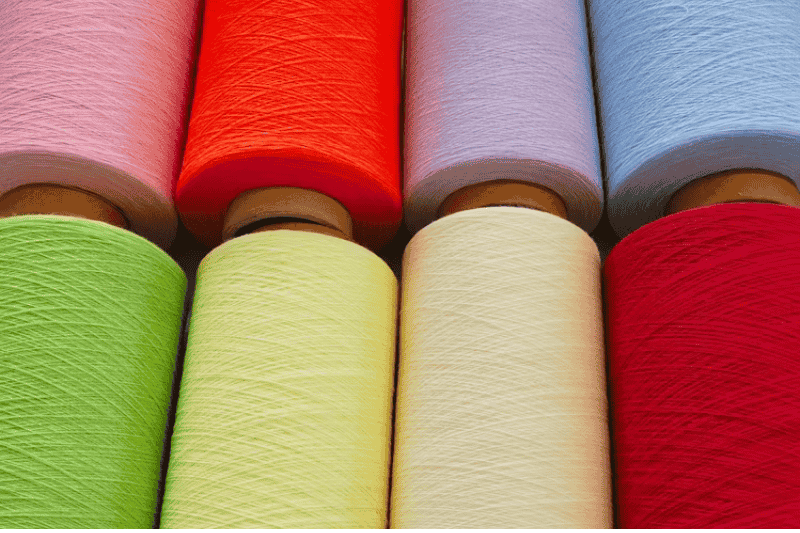
Recycled Yarn Manufacturers - Rajiv Group (1)
In recent years, the fashion and textile industries have come under growing scrutiny for their environmental impact. From water pollution to excessive waste and carbon emissions, traditional textile manufacturing is resource-intensive and harmful to the planet. But a quiet revolution is taking place — and at the heart of it is Recycled Yarn.
This eco-friendly alternative is helping reduce landfill waste, conserve natural resources, and support the growth of a circular economy. In this blog, we’ll explore how switching to recycled yarn, especially recycled cotton, is creating measurable environmental benefits, and why working with recycled yarn manufacturers is a sustainable step forward.
🌍 Understanding Recycled Yarn: What Is It?
Recycled Yarn is created by processing waste materials like discarded clothing, fabric scraps, or plastic bottles (such as PET) into new yarns. Instead of sending textile waste to landfills, it is shredded, cleaned, and spun into usable yarn again — without starting from scratch with virgin resources.
There are two primary types:
-
Post-consumer recycled yarn – made from used clothes and products.
-
Post-industrial recycled yarn – made from production waste like leftover fibers, offcuts, or packaging.
Among these, recycled cotton is one of the most popular materials, especially in fashion and home textiles.
♻️ Why the Shift to Recycled Yarn Matters for the Environment
Switching to recycled yarn isn’t just a trend; it’s an essential change for the planet. Here’s why:
1. 🌾 Conservation of Natural Resources
Producing virgin cotton is water-intensive and requires vast agricultural land. In fact, growing 1 kilogram of cotton can use over 10,000 liters of water. By using recycled cotton, this demand is drastically reduced.
Recycled Yarn also cuts down the need for synthetic fibers like polyester, which are derived from fossil fuels. Fewer resources, less extraction, and a smaller carbon footprint.
2. 🏞️ Less Landfill Waste
Globally, millions of tons of textile waste are dumped in landfills every year. These synthetic materials can take hundreds of years to break down. Recycled yarn manufacturers play a crucial role in solving this problem by recovering and reusing this waste.
By recycling old garments or factory scraps into new yarn, we prevent waste accumulation and extend the lifecycle of fabrics.
3. ⚡ Reduction in Energy Usage
Producing new yarn from raw materials requires significant amounts of energy for spinning, dyeing, and finishing. In contrast, recycled yarn production typically consumes less energy since many of the processes (like dyeing) can be skipped if colored fibers are sorted during recycling.
For example, mechanical recycling of cotton saves up to 60% of energy compared to producing new cotton yarn.
4. 🌬️ Lower Greenhouse Gas Emissions
Textile production accounts for about 10% of global carbon emissions. By shifting to recycled materials, emissions can be significantly reduced.
-
Using recycled PET (plastic) yarn can save up to 70% in CO₂ emissions.
-
Recycled cotton avoids emissions from agricultural machinery and chemical usage.
When industries choose recycled yarn, they contribute to slowing down climate change in a measurable way.
5. 🚱 Reduced Water Pollution
Traditional textile dyeing and finishing processes release harmful chemicals into water bodies, affecting both human and aquatic life.
By recycling already-colored fabric waste, manufacturers can skip the dyeing process, leading to zero chemical discharge. This makes recycled yarn not just eco-friendly but also non-toxic and safer for end-users.
👷 Role of Recycled Yarn Manufacturers
Behind every roll of eco-friendly yarn is the expertise of recycled yarn manufacturers. They’re not just producing yarn — they’re creating impact.
Here’s what the best manufacturers do:
-
Source Responsibly: They collect textile waste from reliable sources and sort it carefully to ensure fiber quality.
-
Use Advanced Technology: With modern machinery, they ensure fiber strength, consistency, and minimal waste during production.
-
Focus on Certifications: Trusted suppliers hold certifications like GOTS (Global Organic Textile Standard) or GRS (Global Recycled Standard) to assure product quality and environmental responsibility.
Brands like RG Fibers, for example, have become key players in the textile industry in Panipat by offering high-quality recycled cotton yarns that serve both domestic and export markets.
🧶 Recycled Cotton: The Star of Sustainable Textiles
Among all recycled yarn types, recycled cotton stands out. It is soft, breathable, and versatile — perfect for everything from garments and towels to bedsheets and upholstery.
Here’s why manufacturers and designers love it:
-
Requires zero new pesticide or fertilizer use
-
Uses up to 90% less water than virgin cotton
-
Offers a natural, biodegradable end product
Plus, it’s ideal for eco-conscious brands that want to meet ESG goals or appeal to environmentally aware consumers.
🌐 Global Trends: Who’s Leading the Shift?
Countries like India, Bangladesh, and Turkey are becoming global hubs for recycled yarn manufacturing. Cities like Panipat have earned the nickname “Textile Recycling Capitals” for their large-scale yarn recovery operations.
Major global fashion brands like H&M, Zara, and Levi’s are integrating recycled yarn into their collections, proving that sustainability and style can go hand-in-hand.
✅ Final Thoughts: Small Change, Big Impact
Switching to recycled yarn may seem like a small shift — but when done at scale, it creates a massive environmental impact. From saving water and reducing emissions to creating a cleaner, circular economy, recycled yarn and other recycled fibers are a smart choice for a better planet.
For businesses, it’s not just a sustainability strategy — it’s a market advantage. And for consumers, it’s a way to make responsible choices without sacrificing quality.
📢 Call to Action
Looking for high-quality recycled yarn or free samples for bulk orders? Partner with certified recycled yarn manufacturers like RG Fibers, where quality meets sustainability. Help build a greener future — one thread at a time.


